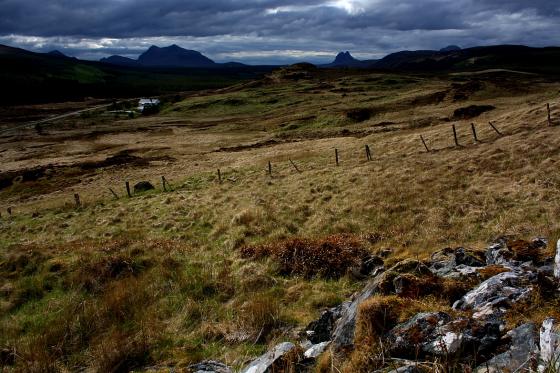
You wouldn’t want to have to much to drink here.

You wouldn’t want to have to much to drink here.

All the caves are in this section.

Looking west.


From the west side.

South wall of the biggest cave,

Entrance to the biggest cave.

Looking back down the dry river bed, it doesn’t stay dry for long.

Start of the wee climb

Up from near here.

Approach to the caves from the west.

16/05/2019 – Creag Nan Uamh – the bone caves. The photo I bet everyone takes on a visit here :-)

16/05/2019 – Creag Nan Uamh – the bone caves.

16/05/2019 – Creag Nan Uamh – the bone caves.

16/05/2019 – Creag Nan Uamh – the bone caves.

16/05/2019 – Creag Nan Uamh – the bone caves.

16/05/2019 – View from the wonderful spring Fuaran Allt nan Uamh up to the distant Creag Nan Uamh – bone caves. Such a fine walk.
Researchers believe they have found possible evidence that polar bears lived in Scotland during the last ice age.
High on a limestone cliff in the north west Highlands are caves that have fascinated visitors to the area for at least 135 years.
More info :
It is a very beautiful walk from the car park up the path which follows the Allt nan Uamh, south east, to the ‘Crag of Caves’ / Creag Nan Uamh or more famously the Bear Caves. As the Ts said the path isn’t to difficult and superb views are to be had from the caves.
Allt nan Uamh is a source of amazement as well, near the caves, when we visited, there was no running water, about 200 meters, norh west, a small spring created a trickle, further down a much larger spring creates a burn and then at Fuaran Allt Nan Uamh it gets down to real business. Fortunately, for us, there was quite a bit more water on the go. As B and myself paddled in the wee pool less than a meter away the spring was creating a small river which gains momentum until it reaches the River Loanan, which eventually enters Loch Assynt.
No polar bears, brown bears or bears of any type, however the deer chorus of Achmore have followed us. What a racket!!
Beautiful place.
Visited 15/10/2020.
16/05/2019 – First day of our trip up north. The sun was shinning and it even felt a bit warm! We arrived at the good sized car park off the A837 feeling a little bit excited as we had been wanting to visit these caves for a while. There is a good path to the caves, about a mile up the lovely Allt nan Uamh. On a sunny day this really is a nice walk. The climb to the caves isn’t hard. Lots of orchids about today lining the path up. There are 4 main caves to look in. They don’t go back too far before getting narrow but are a good size at the entrance. Easy to imagine people living here. The view is wonderful too. The caves are probably best known for the many animal bones found here like Brown bear and even Polar bear! Human bones have also been found and dated to the Neolithic period. Suggestions have been made that it could have been a place of burial.
If you are ever in the area this place is well worth a visit. The hill (Beinn an Fhuarain) behind is worth a bob up too if you have the time, for some wonderful views.
bellacaledonia.org.uk/2018/11/03/creag-nan-uamh/
From Bella Caledonia, the thoughts of the brilliant Dougie Strang
Bears, Bones and Bleak Lands
There are caves here in the glen that tell an incredible a story about this landscape before and after the last glaciation.
This was a barren, empty landscape after the last ice sheet melted around 15,000 years ago. At first only mosses and lichens were able to grow on the rocky ground. Then grasses and shrubs began to colonise the land and, more animals were able to survive here. The first people appeared perhaps 8,000 years ago, hunters on the trail of reindeer and bears. We now this because we’ve found evidence from that period in the caves.
Scottish Polar Bear
A fragment of polar bear’s skull was discovered in one cave. It’s over 20,000 years old, while horse, brown bear and reindeer remains are about 14,000 years old. You can see some of the bones in the National Museum of Scotland in Edinburgh, and there are replicas at the Assynt Visitor Centre, Lochinver.
High and Dry
The cave system here started to form over 20,000 years ago when water began draining into the soft Durness limestone, dissolving the rocks and widening the cracks to form caves. Glaciers later pushed through the area, carving out the glen and leaving cave opening high up the hillside. The glaciers also swept away all evidence of life outside the caves, so we’re lucky inside the caves has survived.
Scotland’s Long Lost Wildlife
Bear and reindeer bones were first unearthed in the caves by geologists Peach and Horne in 1889. More recent digs have revealed that the remains of other animals once roamed Scotland but are extinct now, including arctic fox, lemming, lynx, wolf and wild horse. Some bones may have been washed into the caves by the melting glaciers, but we also know that the caves were used as a handy shelter by animals, and later, by people.
Information Board Details
Nice pdf about the caves







































